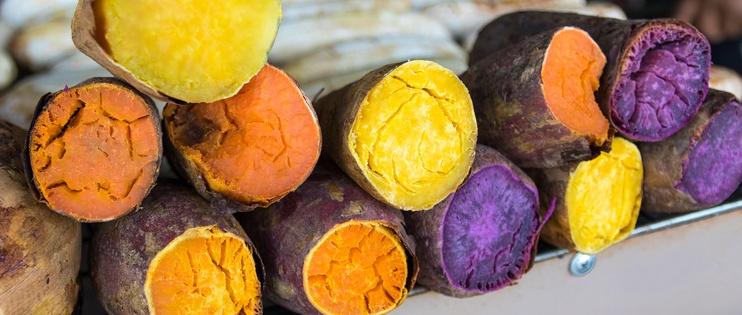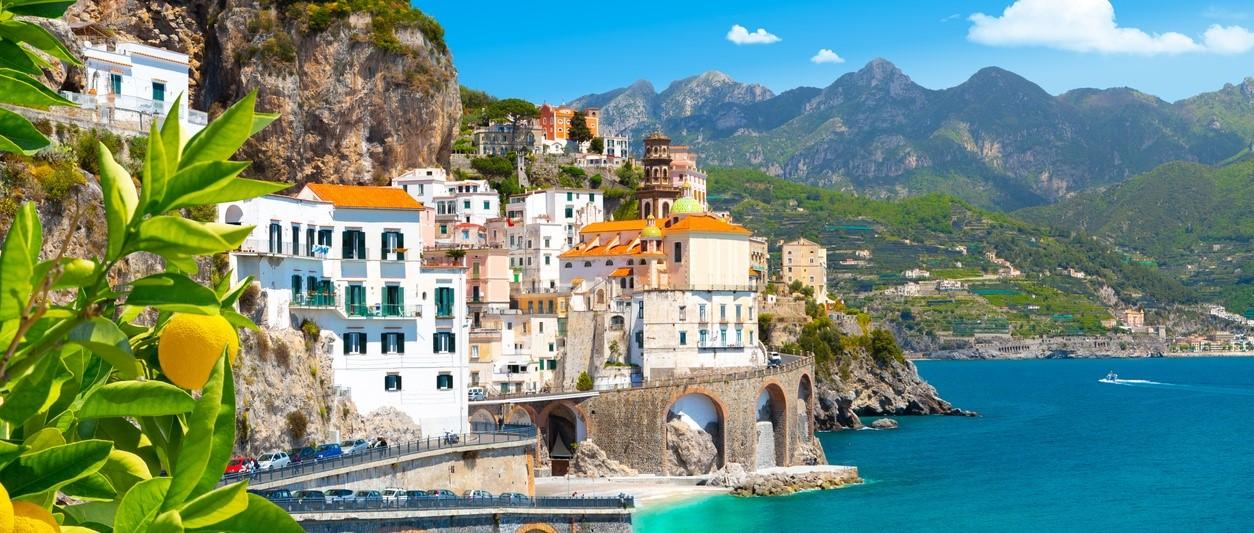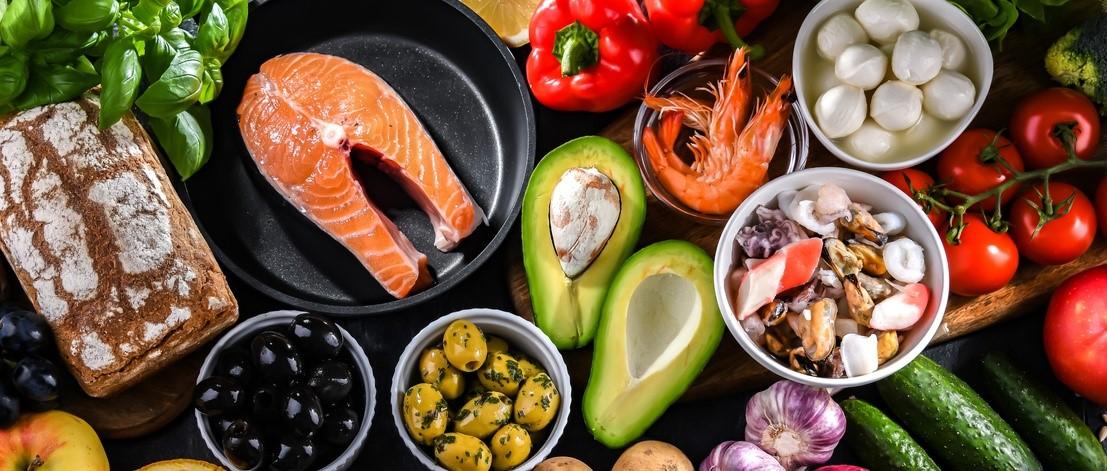
Is the Okinawa diet a recipe for longevity?
Peer reviewed by Dr Colin Tidy, MRCGPLast updated by Lynn StephenLast updated 2 Sept 2025
Meets Patient’s editorial guidelines
- DownloadDownload
- Share
- Language
- Discussion
Once called the land of immortals, the island of Okinawa is home to some of the world's oldest and healthiest residents. These centenarians grew up eating a traditional Okinawa diet, with the ingredients available to them. We speak to an expert about replicating this way of eating, to promote healthy ageing and longevity - no matter where in the world you are. Hint: it's not just what you eat, but how.
In this article:
Continue reading below
What is the Okinawa diet?
Okinawa is an island with its own way of life, distinct from mainland Japan. It belongs to one of five regions in the world known as Blue Zones - made famous because their residents tend to live exceptionally long, healthy lives compared with the rest of the world.
Many aspects of Okinawan culture are believed to promote health and longevity. The traditional diet is thought to be one of the strongest influences. Also important, Okinawan culture fosters enduring friendships, a strong sense of purpose, and a zest for the present moment in its inhabitants.
Christal Burnette, an Okinawan health and nutrition specialist, is a member of the Okinawa Research Center for Longevity Science. She lives in Okinawa, researching and socialising with Okinawan elders. With her help, we unpack the secrets of the Okinawan diet - the traditional ingredients, and beyond:
"If you want to eat like someone in a longevity hotspot, it's not just about copying what they eat, but how they eat it."
What does the Okinawa diet consist of?
This diet is highly nutritious, high in carbs, and low in calories. The traditional Okinawan diet is a fusion of Japanese, Chinese, and South East Asian influences. In the Okinawan language, the word for this mixture is "champuru" or "chample".
How Okinawan centenarians ate for most of their lives
Around 90% of the diet is made up of:
67% sweet potatoes - both purple and orange varieties.
12% rice - not featuring as heavily as it does in mainland Japanese gastronomy.
9% other vegetables - including goya, seaweed, bamboo shoots, cabbage and carrots.
The rest is a mix of:
Legumes - including soy products like tofu and miso.
Other grains - including noodles, millet and wheat.
Fish, meat and poultry - like white fish, chicken, and pork is traditional at celebrations.
Other foods - including jasmine tea and medicinal spices like turmeric and mugwort.
A typical plate emphasises vegetables - often stir-fried or steamed - and soy-based products, alongside more modest portions of noodles, rice, fish, and pork. Many vegetables in the Okinawa diet have potent health-giving antioxidant and anti-inflammatory properties, including the purple sweet potato and goya, also known as bitter melon. A variety of fruits are also enjoyed, especially citrus fruits such as papaya and pineapple.
Mythbusting: close to veganism
Like other Blue Zone diets, the Okinawa diet isn't plant-based. Instead, it features plant-based foods heavily, but is accented with meat. The Blue Zone narrative positions these longevity diets as "close to vegan", according to Okinawa researcher Burnette. Yet, this diet contains more meat than you might think.
"There was a recent documentary on Blue Zones which was shown around the world. I know every Okinawan that was in it. They've told me that a lot of editing went on - for example, the leaving out of meat ingredients from their recipes and interview replies edited to omit mentions of pork.
"It's a big misconception that every Blue Zone diet is around 97% carbs and plants and 3% meat. I know researchers in the Italy and Greece Blue Zones and we all say the same thing - there's a fair amount of meat, including goats, chicken, and frogs. In reality, the amount of meat consumed by each person growing up does vary - but it isn't true that there is barely any meat in the Okinawan diet."
Let food be your medicine
In the Okinawan language, a common idiom "nuchi gusui" roughly translates as "let food be your medicine". In Okinawan culture, the distinction between food and medicine is somewhat blurred, and many traditional herbs and spices with healing and health-giving properties grow in residents' gardens. Turmeric, mugwort and ginger are frequently grown, and consumed daily.
What's not on the menu
Just like other diets enjoyed in the Blue Zones, there's no room for highly processed foods. Instead of fast food, ready meals, and prepared snacks, many ingredients come to the kitchen as they were grown, or are minimally processed, like traditional tofu and noodles.
This means that an Okinawa diet is naturally low in:
Saturated fat.
Salt.
Sugar.
Refined grains.
Processed meats.
The way inhabitants cook also helps reduce these unhealthy food groups. Instead of flavouring dishes with salt, Okinawans will often use herbs and spices like mugwort and turmeric. Many vegetables are also steamed, which unlike frying requires no butter or saturated oils.
Continue reading below
What if I don't have access to Okinawan ingredients?
Okinawa diet staples like the purple sweet potato and goya aren't easy to access everywhere. Burnette, who has published The 100 Year Menu: Recipes from the Okinawan blue zone, is often asked by people around the world how they can still follow this diet.
"This is the number one request I get," she says. "All different kinds of foods are eaten across the Blue Zones. So, if you want to eat like someone in a longevity hotspot, it's actually not the ingredients themselves. Instead, just focus on the quality of the ingredients you have. Just clean, high-quality ingredients that are minimally processed. Whether it be bread, rice, vegetables or meat, look at where they come from. It's also about quantity - and not overeating."
It's not just what you eat, but how
Burnette stresses that the Okinawa diet is a way of eating that goes beyond what's on your plate. How residents are eating is also doing a lot of good for their health.
"Most importantly, it's not just what Blue Zone people eat, but how they eat. If you look at all of these hotspots, they're not eating alone or in isolation, and they're not watching TV. They're eating with friends, they're laughing and happy, they're eating slowly - you chew slowly, talk, take a sip, chew slowly, talk, take a sip, and so on. That's what I would suggest."
From the Mediterranean diet enjoyed in Ikaria, Greece to the Okinawan diet, it's everything around the ingredients - how they're prepared, eaten, and enjoyed - that connects Blue Zones across the globe. Rather than a set menu of magic life-lengthening ingredients, what we see in all Blue Zone diets is a love for the fresh and natural. Eating is innately social, and over-eating is all but non-existent.
What are the benefits of the Okinawa diet?
Okinawan gastronomy is rich in plant-based foods, and so is naturally high in phytochemicals and flavonoids. Found in many fruits, vegetables and plants, these compounds have antioxidant, anti-inflammatory, antiviral and anticancer properties.
Can the Okinawa diet help you live longer?
The diets apparent effect on lifespan has been studied ever since the Okinawa Centenarian Study (OCS) was established in 1975 - the longest ongoing study of centenarians in the world. It was later declared an official Blue Zone in 2005.
Experts believe the healthy fat intake is likely to help reduce cholesterol levels. The antioxidants and anti-inflammatory properties found in the vegetable-rich diet may help promote healthy aging and longevity.
Can the Okinawa diet reduce your likelihood of long-term illness?
Anti-inflammatory and antioxidant-rich foods are also known to reduce your likelihood of disease. Some Okinawan staples also help keep your blood sugar stable. For example:
In sweet potatoes, carotenoids - an antioxidant - may play a role in helping to lower the chance of type 2 diabetes and heart disease.
Soy-based foods may reduce your chance of getting heart disease and certain cancers, including breast cancer.
Can the Okinawa diet support your mental wellbeing?
Burnette has lived with and studied Okinawans for several years. She says: "When it comes to living a long and healthy life, your mental health is just as important as your physical health. These are 50/50 when it comes to longevity."
Eating with family and friends is important. It helps to combat loneliness and isolation, providing the older generation with multiple, reliable touch-points with their loved ones every day. The World Health Organization declared that loneliness and social isolation increase your likelihood of mental health issues and dying younger.
Can following the Okinawa diet help you lose weight?
The diet inherently involves moderate calorie restriction, compared with many diets. This is thanks to the emphasis on vegetables, scarcity of fatty foods on the island, and moderate portion sizes of meals.
This suggests that the Okinawa diet could help people shed excess weight, but bear in mind it hasn't been studied as a weight loss diet. However, maintaining a healthy weight throughout your life is also considered crucial for healthy ageing and longevity.
Continue reading below
Okinawa diet myths debunked
There are many myths surrounding the Okinawa diet, according to Burnette. The Okinawan nutritionist helps set the record straight on some of the most popular.
The Okinawa diet is a Japanese diet
Okinawa is an island off the coast of mainland Japan that's developed its own unique food culture. Burnette explains that, unlike the mainland Japanese, Okinawans don't eat lots of rice, although this has increased in modern times. Instead, their base carb is the sweet potato. They also don't use lots of soy sauce, as many residents couldn't traditionally afford it.
The Okinawa diet is full of bad soy products
Soy-based foods, like tofu and miso soup, do feature heavily. These days, ultra-processed soy products often get a bad rap, but how healthy these are all comes down to the way that they're manufactured. In Okinawa, the soy residents consume is unprocessed, whole, compact soy tofu. As it's made with mineral water or ocean water, it also contains more vitamins and minerals than typical mainland Japanese tofu.
Patient picks for Diet

General health and lifestyle
Do Blue Zones hold the secrets to a longer life?
Autumn may be growing colder in the UK, but there's nothing stopping us looking to warmer climates and asking why their inhabitants are living longer lives. No one can live forever or control what happens in the course of a life, but in some pockets of the world, the chances of living for longer are significantly higher. These places are known as Blue Zones, and there's a lot we can learn from their inhabitants.
by Amberley Davis

Diet and nutrition
Simple ways to follow a Mediterranean diet
A Mediterranean diet conjures up an image of fresh fish and colourful salads doused in olive oil, washed down with a glass of red wine - all while sitting in the sun of course. While we may not have reliable sunshine in the UK, we can certainly tap into the wide-ranging health benefits offered by the Mediterranean diet.
by Lydia Smith
Continue reading below
Article history
The information on this page is peer reviewed by qualified clinicians.
Next review due: 2 Sept 2028
2 Sept 2025 | Latest version
9 Jul 2024 | Originally published
Authored by:
Amberley Davis

Ask, share, connect.
Browse discussions, ask questions, and share experiences across hundreds of health topics.

Feeling unwell?
Assess your symptoms online for free
Sign up to the Patient newsletter
Your weekly dose of clear, trustworthy health advice - written to help you feel informed, confident and in control.
By subscribing you accept our Privacy Policy. You can unsubscribe at any time. We never sell your data.